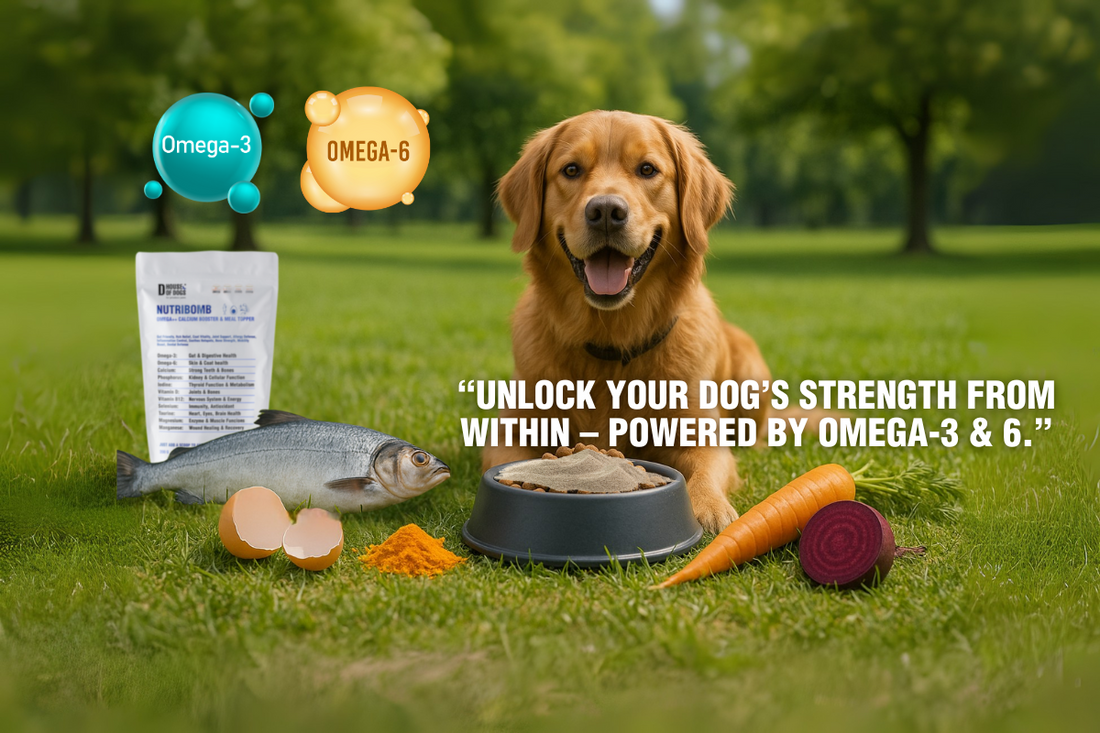
The Role of Omega-3 & Omega-6 in Your Dog’s Diet
When it comes to keeping your dog healthy from the inside out, not all nutrients get the attention they deserve. Omega-3 and Omega-6 fatty acids are two such unsung heroes. These healthy fats play a crucial role in your dog’s brain function, skin health, joint flexibility, immune system, and even mood regulation. But what are they exactly—and how do you make sure your dog is getting the right balance?
Let’s break it down.
What Are Omega Fatty Acids?
Omega-3 and Omega-6 are essential polyunsaturated fatty acids—meaning dogs cannot produce them on their own and must get them through their diet. Both are vital, but they serve slightly different roles:
- Omega-3s (like EPA and DHA) are known for their anti-inflammatory properties. They support joint health, heart function, cognitive sharpness, and promote a shiny coat.
- Omega-6s (like linoleic acid) help maintain healthy skin and coat, support reproduction, and assist in cell function and growth.
Balance Is Key
While both Omega-3 and Omega-6 are beneficial, what really matters is their ratio. A modern problem in many commercial dog foods is the excess of Omega-6s (due to the use of vegetable oils and grain-based fillers) and a lack of Omega-3s, which can lead to chronic inflammation and skin conditions.
A good Omega-6 to Omega-3 ratio for dogs is around 5:1 to 10:1—but many cheaper kibbles have ratios as high as 30:1 or more. This imbalance can result in issues like itchy skin, dull coats, excessive shedding, or even increased risk of arthritis in older dogs.
Natural Sources of Omega-3 & 6

Adding these fatty acids through natural, whole food sources is often the best approach:
Omega-3 Rich Foods:
- Fish like salmon, sardines, anchovies
- Fish oil (make sure it’s purified for pets)
- Flaxseed (in ground or oil form)
- Chia seeds
Omega-6 Rich Foods:
- Chicken fat
- Sunflower oil
- Safflower oil
- Eggs
The key is to provide both—but with more emphasis on boosting Omega-3s, especially if your dog is on a grain-heavy or kibble-based diet.
How to Supplement Smartly
If you’re feeding your dog homemade food or a basic commercial diet, adding a high-quality omega supplement or natural topper can make a huge difference.
That’s why at DHouseOfDogs, we created Nutribomb—a powerful Omega++ Calcium Booster & Meal Topper. It’s packed with essential nutrients like Omega-3 for gut and digestive health, Omega-6 for skin and coat vitality, plus a rich blend of calcium, phosphorus, iodine, selenium, and vitamins like B12 and D to support bones, joints, immunity, and energy. Just a scoop added to any meal helps pet parents balance their dog’s diet naturally—without stress, without fillers. It’s clean, targeted nutrition for happier, healthier dogs.
Signs Your Dog Might Need More Omega-3s

- Dull, dry, or flaky coat
- Itchy or inflamed skin
- Excessive shedding
- Stiff joints or limping
- Seeming low-energy or irritable
If you notice any of these symptoms, it might be time to assess their fatty acid intake.
